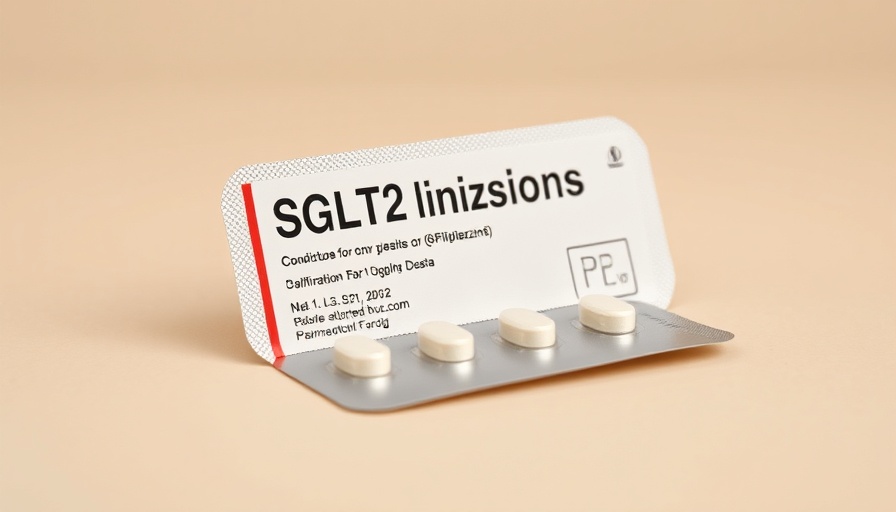
The Surprising Link Between SGLT2 Inhibitors and Atopic Dermatitis
Recent research has spotlighted a vital association between sodium-glucose cotransporter-2 inhibitors (SGLT2i) and a notable reduction in the risk of atopic dermatitis (AD) among patients with type 2 diabetes. As a chronic inflammatory skin condition, AD poses considerable challenges to quality of life, further complicated by its connection to metabolic disorders. The study, published in The British Journal of Dermatology, unveils promising evidence that could guide future treatment approaches for diabetes patients, emphasizing not just glucose control but also potential dermatological benefits.
What is SGLT2 Inhibitor?
SGLT2 inhibitors are a class of medications designed to lower blood sugar levels by facilitating the excretion of glucose through urine. They serve as an effective tool in managing type 2 diabetes, showcasing benefits such as weight loss and cardiovascular risk reduction. This class includes well-known drugs like canagliflozin, dapagliflozin, and empagliflozin, all of which have gained approvals for clinical use due to their efficacy and safety profiles in diabetic patients.
Study Insights and Methodology
The cohort study examined health data from Taiwan's National Health Insurance Database, a robust source that encompasses a vast patient population. Researchers compared the incidence rates of AD between individuals on SGLT2 inhibitors and those on dipeptidyl peptidase-4 inhibitors (DPP4i), another commonly prescribed class for managing diabetes. Remarkably, SGLT2i users showed a lower incidence of AD at a rate of 9.742 per 1,000 person-years, surpassing the 12.070 rate observed in DPP4i users.
After applying inverse probability of treatment weighting (IPTW) to adjust for potential confounding variables, the analysis revealed that SGLT2i users faced a 16% reduced risk of developing AD. Further subgroup analysis also suggested that the protective effects were more pronounced in male patients.
Mechanisms at Play: How Do SGLT2 Inhibitors Work?
Understanding the mechanisms behind this protective effect can enhance future therapeutic strategies. SGLT2 inhibitors may decrease systemic inflammation, potentially integral to the onset of AD. By reducing circulating glucose levels and sodium excretion, these medications interact beneficially with the body's inflammatory pathways, improving skin health indirectly.
The Long-Term Implications for Diabetic Patients
For patients with diabetes, adequate skin health management is crucial. The implications of this research could lead to integrated care strategies that include monitoring skin health as part of diabetes management. As research into the dermatological effects of SGLT2 inhibitors advances, new guidelines may emerge that encourage healthcare professionals to consider these medications not just for diabetes control but as preventive measures against skin conditions like AD.
Future Studies: What Lies Ahead?
The current findings posit a strong basis for further investigation into the long-term effects of SGLT2 inhibitors on skin health. Future studies will ideally delve deeper into the mechanisms by which these medications influence skin conditions and assess their safety profiles more comprehensively. As the understanding of diabetes and its complications expands, potential applications for SGLT2 inhibitors as multi-faceted treatments may revolutionize patient care.
Conclusion: Empowering Patients with Actionable Insights
Given the evidence linking SGLT2 inhibitors to reduced AD risk, patients with type 2 diabetes are encouraged to engage in discussions with their healthcare providers about the advantages of these medications. Personalized treatment options tailored to individual health profiles could lead to enhanced management of both diabetes and related dermatological conditions.
 Add Row
Add Row  Add
Add 




Write A Comment